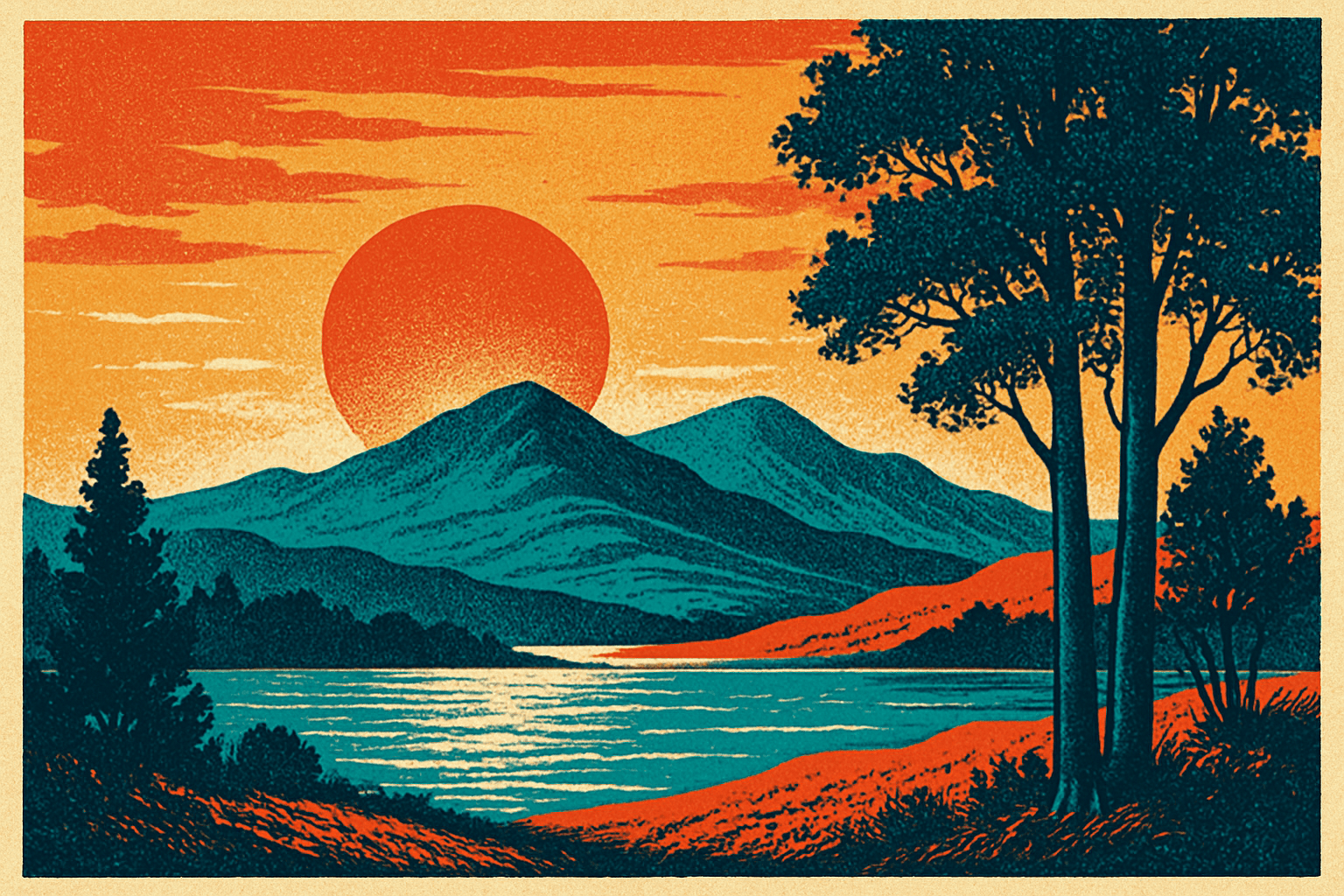
Screenprint-Style Art
Screenprint-style art is characterized by its bold, graphic images and limited color palette. This art style is often used for advertising and propaganda purposes, as it is able to communicate a message quickly and effectively.
AOI thinking about Screenprint-Style Art [+_~]-/
Overview and Quickfacts
Screenprint-style art is a type of art that is created by using a screen to print an image onto a surface. This type of art is often used for creating posters, prints, and other types of artwork. Screenprint-style art is typically created by using a stencil to create an image on a screen, and then using a squeegee to push ink or paint through the screen onto a surface. This type of art can be used to create a variety of different images, and is often used by artists to create unique and original artwork.
Can understand it also, as:
Screenprint-Style Art can be synonymized with Screen Art, Screen Printing, or Serigraphy.
Categorize it as:
Impressionism, Modernism
.: Dreaming :.
holds a HAIKU for the art style
:. Thought is power .:
Detailed Description
Screenprint-style art is a type of art that is created by using a screen to print images or designs onto a surface. This type of art is often seen in advertising and on products such as t-shirts and posters. Screenprinting is a popular printing technique because it is relatively simple and inexpensive to do. Some of the most famous artists who have used screenprinting in their work include Andy Warhol, Roy Lichtenstein, and Jasper Johns. Warhol was one of the first artists to really experiment with screenprinting and used it to create some of his most iconic images, such as the Campbell’s Soup Can paintings. Lichtenstein was another important artist who used screenprinting to create his famous pop art paintings. Johns also used screenprinting in his work, and is known for his flag paintings which incorporate this printing technique.
.. beep, beep, beep ..
<START OF TRANSMISSION>
1. Screenprint-style art is a printing technique that involves passing a stenciled screen through ink to create an image on paper or fabric. 2. The technique was first developed in China during the Song Dynasty (960-1279 CE) and later spread to Europe. 3. It became popular in the United States during the 1960s as a means of mass-producing posters and other printed materials. 4. Screenprinting is a versatile technique that can be used to create a variety of different images and patterns. 5. The most common type of screenprinting is known as ÃÂÃÂsilkscreenÃÂÃÂ or ÃÂÃÂserigraphy.ÃÂÃÂ 6. Screenprinting can be done by hand or using a machine. 7. The first step in screenprinting is to create a stencil, which can be done using a variety of methods, including hand-drawing, photo-emulsion, or computer-aided design (CAD). 8. Once the stencil is created, it is placed on a screen and secured in place. 9. Ink is then applied to the screen and forced through the stencil onto the paper or fabric below. 10. The ink passes through the stencil openings, leaving behind a printed image. 11. Screenprinting can be used to print on a variety of different materials, including paper, fabric, glass, metal, and wood. 12. Screenprinting is a popular choice for printing t-shirts, posters, and other promotional materials. 13. It is also commonly used in the creation of fine art prints. 14. Screenprinting is a relatively simple and inexpensive printing technique. 15. It is also a relatively quick process, making it ideal for mass production. 16. Screenprinting is a versatile technique that can be used to create a wide variety of images and patterns. 17. Screenprinting can be used to create simple one-color designs or more complex multi-color images. 18. Screenprinting is a durable printing technique that produces long-lasting prints. 19. Screenprinting is a popular choice for both commercial and fine art applications. 20. Screenprinting is a versatile printing technique that can be used to create a wide variety of images and patterns.
<EOF>
.. robbel bob
Visual Examples from our image gallery
Coming soon, we are so slow .. might never come
Artists, Paintings, and more
(be aware, can be highly speculative)
Artists (be aware, speculation possible):
1. Andy Warhol (1928-1987) 2. Roy Lichtenstein (1923-1997) 3. Robert Rauschenberg (1925-2008) 4. Richard Hamilton (1922-2011) 5. Peter Blake (born 1932) 6. David Hockney (born 1937) 7. R. B. Kitaj (1932-2007) 8. John Walker (born 1939) 9. Patrick Caulfield (1936-2005) 10. Richard Smith (born 1931) 11. Howard Hodgkin (1932-2017) 12. Bridget Riley (born 1931) 13. Frank Stella (born 1936) 14. Robert Indiana (1928-2018) 15. Jasper Johns (born 1930)
Artworks (be aware, speculation possible)
1. “The Great Wave off Kanagawa” by Katsushika Hokusai (1829-1833) 2. “The Hay Wagon” by Andrew Wyeth (1937) 3. “Nighthawks” by Edward Hopper (1942) 4. “The Persistence of Memory” by Salvador Dali (1931) 5. “The Scream” by Edvard Munch (1893) 6. “The Starry Night” by Vincent van Gogh (1889) 7. “The Sunflowers” by Vincent van Gogh (1888) 8. “The Third of May 1808” by Francisco Goya (1814) 9. “The Tower of Babel” by Pieter Bruegel the Elder (1563) 10. “The Treachery of Images” by Rene Magritte (1928-1929) 11. “The Vitruvian Man” by Leonardo da Vinci (1492) 12. “The Wanderer Above the Sea of Fog” by Caspar David Friedrich (1818) 13. “Ulysses and the Sirens” by John William Waterhouse (1909) 14. “Washington Crossing the Delaware” by Emanuel Leutze (1851) 15. “Whistler’s Mother” by James McNeill Whistler (1871)
Epoch
The art style Screenprint-Style Art is most commonly associated with the 1960s.
AI ART RESSOURCES (AKA, well Tools)
Helping tools -> predefined search links on other pages:











